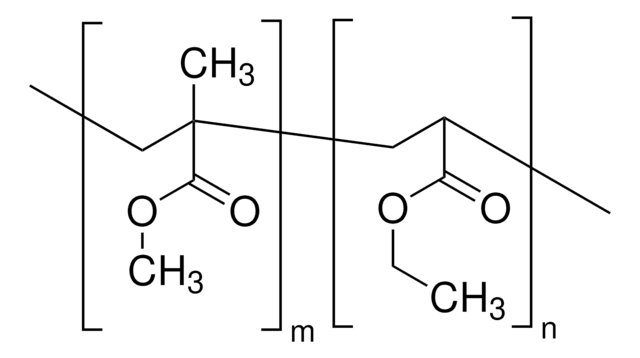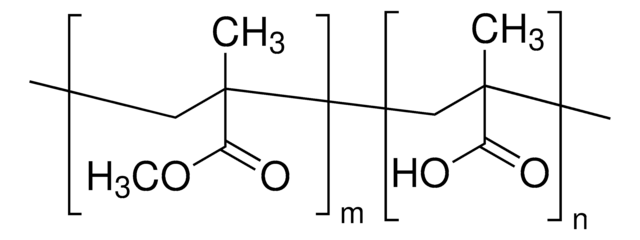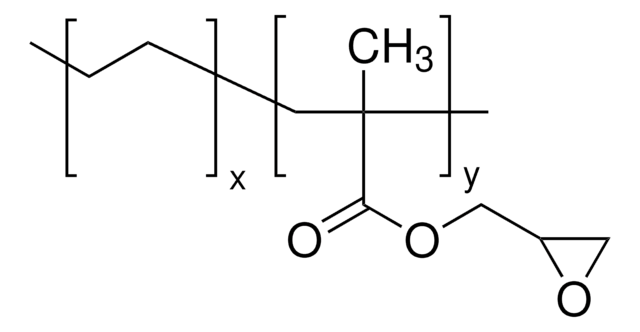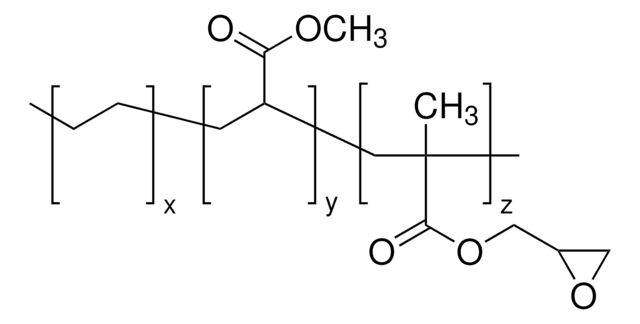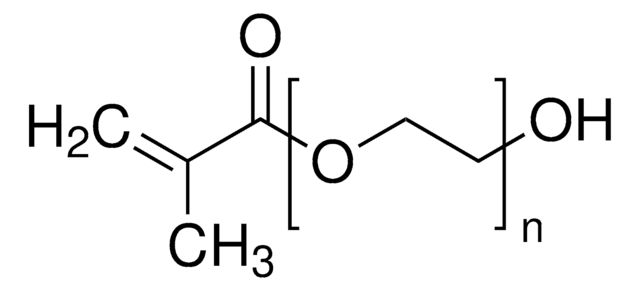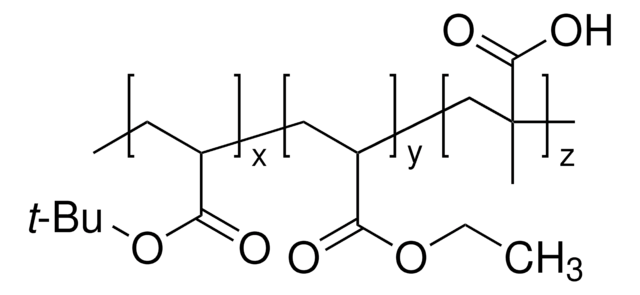Kluczowe dokumenty
463183
Poly(methyl methacrylate-co-ethylene glycol dimethacrylate)
50 μm particle size
About This Item
Polecane produkty
Formularz
particles (spherical)
Poziom jakości
sieciowanie krzyżowe
5 % cross-linked
wielkość cząstki
50 μm
gęstość
1.19 g/mL at 25 °C (lit.)
ciąg SMILES
COC(=O)C(C)=C.CC(=C)C(=O)OCCOC(=O)C(C)=C
InChI
1S/C10H14O4.C5H8O2/c1-7(2)9(11)13-5-6-14-10(12)8(3)4;1-4(2)5(6)7-3/h1,3,5-6H2,2,4H3;1H2,2-3H3
Klucz InChI
XBDAKYZJVVYINU-UHFFFAOYSA-N
Szukasz podobnych produktów? Odwiedź Przewodnik dotyczący porównywania produktów
Powiązane kategorie
Opis ogólny
Zastosowanie
Kod klasy składowania
11 - Combustible Solids
Klasa zagrożenia wodnego (WGK)
WGK 3
Temperatura zapłonu (°F)
Not applicable
Temperatura zapłonu (°C)
Not applicable
Środki ochrony indywidualnej
Eyeshields, Gloves, type N95 (US)
Wybierz jedną z najnowszych wersji:
Masz już ten produkt?
Dokumenty związane z niedawno zakupionymi produktami zostały zamieszczone w Bibliotece dokumentów.
Produkty
Self-assembled monolayers (SAMs) have attracted enormous interest for a wide variety of applications in micro- and nano-technology. In this article, we compare the benefits of three different classes of SAM systems (alkylthiolates on gold.
Global Trade Item Number
| SKU | GTIN |
|---|---|
| 463183-500G | 4061837851667 |
| 463183-100G |
Nasz zespół naukowców ma doświadczenie we wszystkich obszarach badań, w tym w naukach przyrodniczych, materiałoznawstwie, syntezie chemicznej, chromatografii, analityce i wielu innych dziedzinach.
Skontaktuj się z zespołem ds. pomocy technicznej